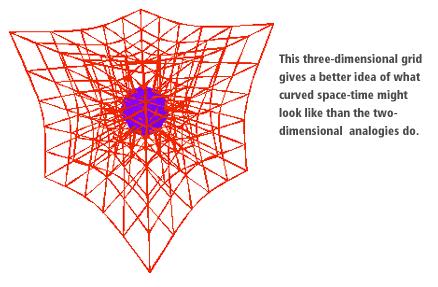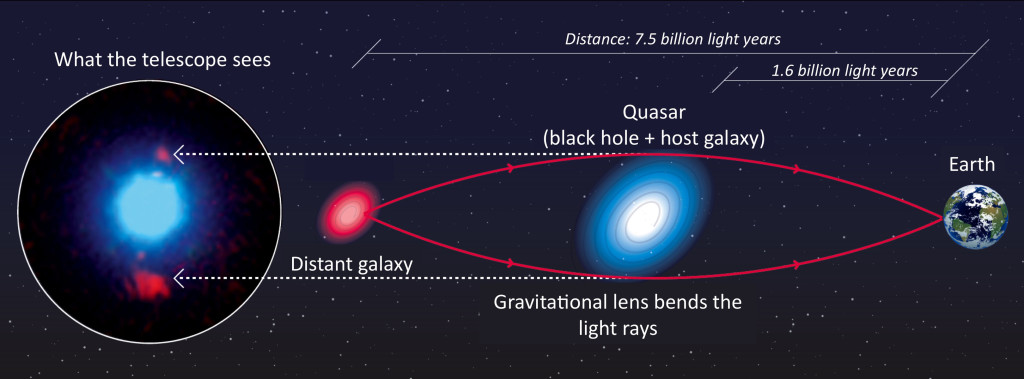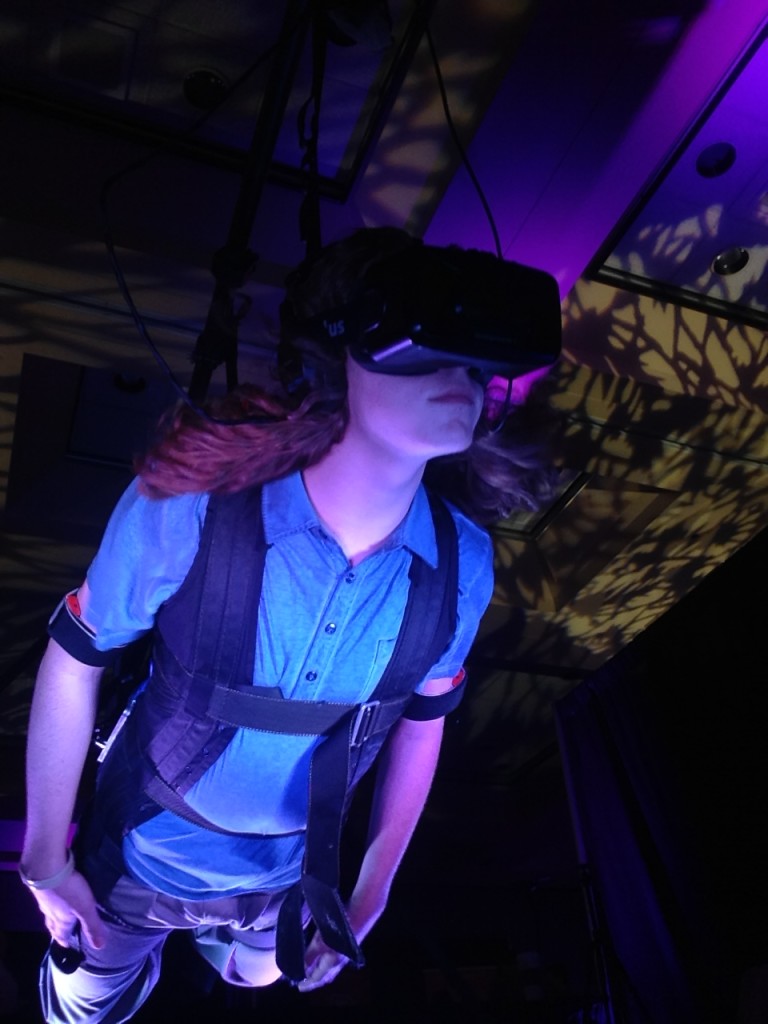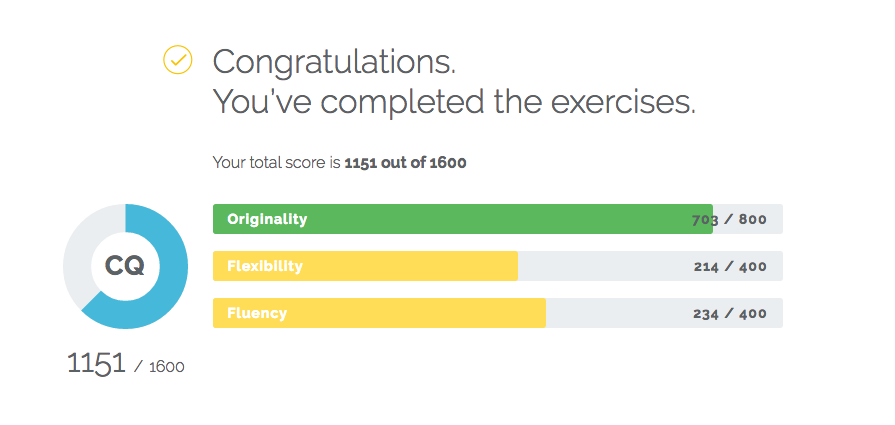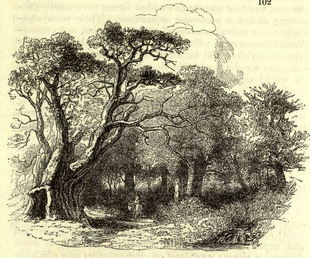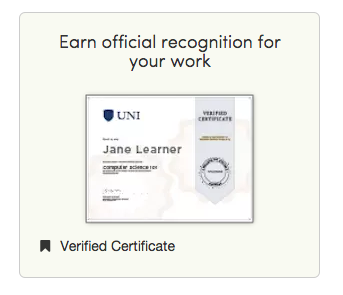-

-

-

-

-

-

-

-

-

-

-
-

-

-

-

-

-

-

-

-

-

-

-

-

-

-

-

-

-

-

-

-

-

-

-

-

-

-

-

-

-

-
-

-

-
 TOTW: Google's Project Ara Modular Phone May Be The Future Of SmartphonesOctober 30, 2014
TOTW: Google's Project Ara Modular Phone May Be The Future Of SmartphonesOctober 30, 2014 -

-

-

-

-

-

-

-

-

-

-

-

-

-

-
-
-

-

-

-

-

-

-

-

-

TechSpots
How Einstein Predicted The Future: A Story Of Gravitational Lensing
08 years
It’s 1916. A relatively unknown (see what I did there) physicist named Albert Einstein has just released a couple of papers about his very weird but interesting Theory of Relativity, and you can’t decide what you want to think about it. The papers have gained Einstein some popularity in the physics community, many agreeing with what he had to say, some disagreeing. Many years later, once the theory was proven through observations of Mercury’s orbit and other various tests throughout the years, Einstein became an internationally renowned, scientific rock star. Now it’s 2015, 100 years after Einstein introduced his ingenious theory. Einstein is still known as the epitome of human intelligence, and his fame and prestige is as widespread as ever, while the repercussions of his work still permeate the modern scientific landscape – so much so that it allows us to predict the future.
Before we get into the whole time travel stuff, it might help to understand more about what exactly General Relativity is. Despite the fact that Einstein is known as a genius worldwide, the specifics of what his theory actually means are lost on most people who haven’t extensively studied it. Whereas we see time and space as distinct, Einstein thought of them as one thing: “spacetime”. (Try not to think too hard about that merging space and time part.) Where Newton thought that there was this mysterious force called gravity that radiated from anything with mass, Einstein had his own theory, which assumed that, rather than using an enigmatic force to pull nearby things to it, objects with mass (especially large ones) curve spacetime. So, when following the easiest path through spacetime, which all objects naturally do, objects near another large object, say the Earth, naturally get pulled toward it. Now there’s a proposition for you: just by existing, you disrupt the fabric of the universe by curving it.
But it’s true, and as I wrote earlier, general relativity has been confirmed through many different experimental observations over the years. One such confirmation came through the discovery of a phenomenon that Einstein predicted in his papers, but never expected to be observed because of its rarity: gravitational lensing. Gravitational lensing occurs around large objects, though not just large as in the Earth or even the Sun, but large as in supermassive galaxy clusters. As it turns out, Einstein’s idea that things with mass curve spacetime not only explains gravity but also implies gravitational lensing. Because large objects curve spacetime, really large objects like galaxy clusters curve spacetime much more, enough so that light coming from behind the cluster becomes visibly curved.
The light coming from an object directly behind the galaxy cluster, a smaller galaxy cluster for instance, will get curved around the cluster in the foreground and scattered away from its previous course, potentially toward the awaiting telescopes here on Earth. Einstein thought it would be unlikely that such a situation that we could observe on Earth would happen anytime soon; that a gravitationally lensed light source would happen in our direction, that the light would be lensed toward us, and that we’d be ready to receive it. He happened to be wrong on this one, as we have observed many instances of gravitational lensing in action over the years, the image below being one such example.
And one more thing: gravitational lensing essentially peers into the past. Because light takes time to travel to Earth, the farther away you look in a telescope, the further back in time you see. This doesn’t affect us in day to day life, but with large space telescopes like Hubble we can see billions of year into the past. Since gravitational lensing acts very similar to a telescope, taking light from far away and magnifying it, the foreground galaxy cluster acting as the lens, we can legitimately say that gravitational lensing peers into the past.
So, aside from being a fascinating phenomenon and an example of General Relativity in action, gravitational lensing has been used over the years be a tool to peer into the universe’s history, and recently, into the future as well. Researchers at the University of California, Berkley, published a paper in Science that detailed their observations and subsequent research on a supernova they named Refsdal after Norwegian astronomer Sjur Refsdal. Patrick Kelly, an astronomer at the university, noticed something odd while looking through photos taken by the Hubble Space Telescope. What Kelly noticed was what’s called an Einsteinian Cross, such as the one below:
An Einsteinian Cross occurs when gravitational lensing bends the light around a galaxy cluster and toward Earth in a way that projects 4 images of the same star around the forefront galaxy in the shape of a cross. In this case, the star was actually a supernova, when a star explodes in a fantastic burst of energy and light. Supernovae are one of the biggest and brightest events in the universe, releasing up to around 1044 joules, or the total energy released by an average star in it’s 10 billion year long lifetime. But supernovae are fairly rare, so you can imagine how lucky it was to observe a gravitationally lensed one.
As it turns out, Refsdal is actually 9 billion light years away, and since the supernovae is a one-time event, we can conclude that gravitational lensing has allowed us to photograph the supernovae 9 billion years in the past, almost three-quarters of the way to the beginning of the universe. Because of an odd phenomenon in spacetime, and lucky happenstance, we get to observe the death of a star billions of years ago. And not only that, but we get to see it multiple times.
While in most drawings and explanations of gravitational lensing, we see the light being bent around a perfectly spherical bubble of gravitational attraction, whereas in reality that gravitational bubble can be warped. Essentially, the path around the cluster can differentiate the light paths enough so that some take longer than others. The direct effect of this differentiation is that we get to see the supernova over and over again, as the light paths keep hitting us at different times. We only observed one so far, in November of this year, but we can assume that we missed the explosion being replayed twice in the 20th century, and we can even predict that another will appear in the next 1-4 years.
And there we have it! We have successfully predicted the future, although admittedly in a fairly specific way. But the usefulness of this situation spans more than just the coolness of predicting the future and seeing into the past. “It’s a wonderful discovery,” said Alex Filippenko, a professor of astronomy at Berkley and member of Kelly’s team. “We’ve been searching for a strongly lensed supernova for 50 years, and now we’ve found one. Besides being really cool, it should provide a lot of astrophysically important information.” For instance, with more research the scientists may be able to gain insight into how supernovae work, how gravitational lensing work, in turn the nature of spacetime, and even how dark matter works, which makes up a large portion of the gravitational pull affecting the light from the supernova’s original explosion. Discoveries like these are not only exciting and interesting, but they allow us to continually understand more and more about the world, and universe, around us.
Mindride’s Airflow Can Make You Fly – Well, Virtually
09 years
Humans can’t fly without technological assistance, but that hasn’t stopped us from building planes, helicopters, wingsuits, and more. Flying shows up in mediums ranging from comic books to myths and fairy tales to cultural folklore. From Icarus to Superman, humans have desired to fly. But as technology has advanced, watching people fly hasn’t satisfied us; now we want to feel like we truly are flying, and in this respect technology is beginning to grant our wish, through Virtual Reality devices.
This morning, at the Augmented World Expo in Santa Clara, California, I got the opportunity to fly. In a unique booth at the Expo, a company called Mindride offered an experience, Airflow, that involved strapping myself into a harness, donning headphones and an Oculus Rift, and then flying Superman-style through a virtual Alps-like landscape. How could I say no? And so, after 5 minutes of harnessing and calibration, I was flung into this mountainous world, floating thousands of feet above the “ground.” Under me were mountains, some snow-capped, others green. Around me, randomly scattered in the sky, were big pink spheres. The objective of this experience was to steer yourself towards these spheres, trying not to flinch as you run right into them, and pop as many as possible. I have to say, I think I did pretty well, but the larger point is that current generation VR technology is enabling experiences that really can begin to replicate those that humans have dreamt of for centuries.
The booth was set up pretty unusually. With a desk off to the side, the majority of the space was taken up by this “ride”. Consisting of a couple of beams with straps, harnesses, and cords running everywhere, the infrastructure was pretty impressive but not exactly family room-ready. Before you got to experience the flying, you had to put sensors on each arm that track where you are pointing your arm in relation to your body. Once strapped in, I was hanging horizontally, with the computers gauging whether I was holding my arms straight back in boost mode, left arm out to go left and right arm out to go right, or both arms dangling to hover in place. On my head was an Oculus Rift running Airflow’s custom software. To add effect, there are two fans blowing air in your face, which vary how much air they blow based on your flight speed.
Overall, the experience was surreal. Once you are strapped in and flying, wind in your face, you easily forget your immediate surroundings, which in my case included a gaggle of tech entrepreneurs demoing their products. The immersion was astounding, andMindride did a great job making the experience more than a run-of-the-mill VR game. Of course, as it is with new technologies, there are clear hints that you aren’t truly flying across in amountain-filled world chasing pink bubbles. The occasional background noise interfered with the experience, as did my tendency to shift focus from the screen-wide image to pixel-level details. But again, as technology advances, these subtle distractions will be minimized; in fact, some solutions to the issues I had were even displayed Expo. As experiences like these gradually become more common in places like malls, theme parks, and even in our own homes, we will start to see a blending of reality, as we’ve always know it, and virtual reality – a reality in which anything is possible. It’s hard to doubt the demand for that.
The Void Brings Virtual Reality To Life
09 years
No doubt, virtual reality is a revolutionary technology in the field of gaming, military training, and more. Vision makes up so much of our reality that when it is altered or augmented, we can feel like we are in a totally different world, even if things are occurring in that world that we know can’t really happen (e.g., aliens attacking, cars flying, or dragons breathing fire). This is the power and potential of virtual reality products currently under development such as Project Morpheus and Oculus Rift; they can make you believe that you are living in a fantasy world.
The new post-beta Oculus headsets appear to represent a big step forward in immersive gaming, despite lacking one major ingredient in fully immersive gaming: the actual feeling of running away from an enemy, picking up objects, and jumping over a pit of lava. Although the experience is pretty good only augmenting your vision, that last step toward achieving something I would consider fully immersive is building a gaming system that made you physically feel like you are in the game. And that is exactly what Ken Bretschneider, founder of The Void, is trying to achieve.
“I wanted to jump out of my chair and go run around,” Bretschneider said. “I wanted to be in there, but I felt like I was separated from that world just sitting down playing a game. So I often would stand up and then I couldn’t do anything.” – Ken Bretschneider
Although still conceptual, the Void’s product is aiming to take virtual reality gaming to the next level. The idea behind the company is pretty simple: they will create “Void Entertainment Centers” that will use high-tech virtual reality technology, along with real, physical environments to create the ultimate VR experience. Sounds awesome.
The execution of this idea, however, is very complicated.
There are many technical obstacles to creating a fully immersive VR experience. First of all, you need state-of-the-art tracking systems, not only because it will make the experience more realistic, but also since you don’t want the players running into walls (or each other) because the VR headset lagged slightly or didn’t depict the object in the first place.
Also, the VR headset itself better be up to par, otherwise the whole experience itself isn’t worth it. According to The Void’s website, their “Rapture HMD” (head-mounted display) is as good as if not better than other VR headsets such as the recently announced Oculus Rift set for release later this year. With a screen resolution of 1080p for each eye, head-tracking sensors that are accurate to sub-millimeter precision, a mic for in-game communication, and high-quality built-in THX microphones, the Rapture HMD isn’t lacking in impressive specs. Whether it is ultimately good enough to feign reality, though, is a question that will only be answered when the headsets go into production and become part of The Void’s immersive experience.
The Void gear includes not only the HMD but also a set of special tracking gloves — to make your in-game hands as real as possible — and a high-tech vest to provide haptic feedback in response to virtual stimuli. But the technology alone does not suffice, as that is replicable outside of The Void. What would make the experience unique is the physical environment around the players and built into The Void’s Entertainment Centers. In each game center, the first of which is planned to be built in Pleasant Grove, Utah, there will be an array of different stages prepared for players to experience a variety of virtual games. In every “Game Pod”, there are features that make playing there more immersive, such as objects you can pick up and use during the game, elevation change in the platforms, and even technologies that simulate temperature changes, moisture, air pressure, vibrations, smells, and more. All of these mental stimuli outside of the game will be designed to trick your brain into thinking it’s in the game, and that’s pretty much exactly the experience The Void is trying to provide.
Overall, The Void is a big step towards a new age in gaming. For as long as gaming has been around, the actual stimuli coming from the game has been purely vision and hearing based; now, incorporating real objects, physical surroundings, and the environment-based technologies mentioned above, we are nearing a complete immersive experience (a la Star Trek’s holodeck). Science fiction writers have long pondered virtual systems that realistically simulate other worlds, and The Void is potentially one step closer to that ideal. Whether or not we are heading rapidly in that sci-fi direction, for now the Void’s Entertainment Centers would certainly be a lot of fun.
The Dictionary Of Obscure Sorrows Creates Words For Unnamed Feelings
09 years
The Internet is full of surprises. One of these pleasant oases of intelligence, creativity and artistic genius is the website & YouTube channel The Dictionary Of Obscure Sorrows. The Dictionary Of Obscure Sorrows is a fairly unknown website that posts incredibly inspiring, thoughtful and philosophically profound pieces of writing and video. The great writing, paired with the great editing and unique film work on the channel, makes me surprised this channel isn’t more popular. Started as a website, The Dictionary of Obscure Sorrows is, well, pretty much what it says. Created by John Koenig, a writer and graphic designer, The Dictionary is a collection of words, created by John, that describes emotions, experiences, and sorrows for which there aren’t currently words for where there really should be.
On his journey, John has tackles some philosophically profound topics, leaving you with a sense of wonder that someone could so accurately describe one event or another in your life, and wrap it up in one word. And although the words John creates are just from his mind, and aren’t actual words, I hope writers will start using them, as they seriously need to be integrated into our language. And, if you research a little, you can see that he actually uses other languages, mythology, and more to craft his perspicuous words.
To illustrate that, here are some examples of some words for which he has only written definitions (not created a video) on his website:
Lachesism – n. the desire to be struck by disaster—to survive a plane crash, to lose everything in a fire, to plunge over a waterfall—which would put a kink in the smooth arc of your life, and forge it into something hardened and flexible and sharp, not just a stiff prefabricated beam that barely covers the gap between one end of your life and the other.
Gnossienne – n. a moment of awareness that someone you’ve known for years still has a private and mysterious inner life, and somewhere in the hallways of their personality is a door locked from the inside, a stairway leading to a wing of the house that you’ve never fully explored—an unfinished attic that will remain maddeningly unknowable to you, because ultimately neither of you has a map, or a master key, or any way of knowing exactly where you stand.
Jouska – n. a hypothetical conversation that you compulsively play out in your head—a crisp analysis, a cathartic dialogue, a devastating comeback—which serves as a kind of psychological batting cage where you can connect more deeply with people than in the small ball of everyday life, which is a frustratingly cautious game of change-up pitches, sacrifice bunts, and intentional walks.
As you can see, these words and definitions are truly incredible. They make you think, and in a way you never have before, about your life’s experiences. And the video series that John has created to go along with the website only enhances the experience. With great animation, unique videos and intriguing new ways of filming, The Dictionary Of Obscure Sorrows’ channel and their videos make for an extraordinary experience to watch. Watch the videos above for my favorite of his videos, click HERE to go to his channel, or go HERE to visit his site!
Participate In Scientific Data Collection With Zooniverse
09 years
Analyzing and playing with your data might just be the best part about being a scientist. Once the equipment is set up, and your instrument is ready, the data start streaming in. Whether it’s in the form of pictures, light readings, or a thousand other variables, it’s always exciting to look at the raw material that might help you make a discovery. Unfortunately, this process of combing and sorting through data is often conducted privately. We hear about the discoveries made and the techniques used, but very little about the actual process of examining data and finding the anomaly.
This is where the online project Zooniverse comes in. Zooniverse is a citizen science project, aimed at educating and involving the public in scientific projects. Made available through Zooniverse’s well-designed websites, such as Planet Hunters, Galaxy Zoo, Snapshot Serengeti, Science Gossip and more, Zooniverse allows you to participate in analyzing data from a plethora of different sources, in many different fields such as Physics, Astronomy, Humanities and more. All the websites are share a similar design: you are given an image or set of data on the left-hand side of the screen, and on the right you have a panel to describe that image. After analyzing the image, you can sort it into categories, starting with whether or not the image or data has what the project is looking for. (i.e., an animal in the picture, a transit in the data) Once you have cleared that preliminary hurdle, you can then categorize the data more granularly, further helping the scientists collecting the data reach their goal and make a discovery.
For instance, Galaxy Zoo, a website under Zooniverse’s network, allows you to inspect recent pictures taken from the Sloan Digital Sky Survey, a big astronomical project that is taking pictures of the seemingly black sky and showing that there are actually billions of galaxies hiding there. Using these images of the galaxies, you can categorize them into groups such as spiral, elliptical, merger, and irregular. Not only is this a great way to help scientists test their theories on the commonality of certain types of galaxies, but it’s a great way for the general public to learn astronomy interactively.
Another of Zooniverse’s sites is Science Gossip, a program aimed at documenting and transcribing old field notes and papers from science journals from the1800s to 1900s. On this site, you can flip through pages of old publications such as The Intellectual Observer, The Quarterly Journal Of The Geological Society Of London, The Wiltshire Archeological and Natural History Magazine, and more. If a page has an illustration, table, or chart, you can highlight it, type the caption, and even comment about it on Zooniverse’s built-in social platform. It’s amazing to see the incredible variety of sketches and drawings that are in these journals, as they can range from depiction of dinosaur skeletons, to shells, to geological landscapes.
Overall, Zooniverse is a great way to not only educate the public but also help researchers complete their data collection and categorization in a more precise and timely manner. Often humans are better than computers at categorizing photos and data according to patterns and what’s actually in the photo, so having to public pitch in to help categorize the photos is a great way to get the job done. Plus, I don’t know about you, but I had a blast categorizing far away galaxies and picking out animals from African camera-traps. I definitely recommend you go to Zooniverse and create an account, as even if categorizing galaxies doesn’t fit your tastes, they have a bunch of other projects, such as the ones below:
Galaxy Zoo – Classify galaxy images
Higgs Hunter – Analyze Large Hadron Collider data
Planet Hunters – Analyze Kepler data
Penguin Watch – Categorize penguin camera-trap images
Ancient Lives – Transcribe ancient writing
Chicago Wildlife Watch – Categorize Chicago wildlife camera-trap images
Snapshot Serengeti – Categorize Serengeti camera-trap images
Cell Slider – Analyze Cancer Cells
and more, which you can find on the Zooniverse website! Enjoy!
Coursera Partnering With Instagram, Google and More
09 years
College has always pretty much been the only way to start a career in our modern world. However well you do without a good college degree, “I went to Stanford.” will always leave a lasting impression on whoever you’re talking to. But, as online classes and resources continue to branch out, creating more content and ways to access them, the credibility of these classes continue to increase. Coursera, an online college level course distributor, already has a pretty good system running. There are hundreds and hundreds of courses on the site, only a handful on demand, most with scheduled class times spread throughout a period of time, curated by many different universities all over the world in tons of different languages. If you complete these courses, you can earn a verified certificate of completion, signed by the instructor from the university. Although the certificate can’t actually be used as credits, they are a good show of prior learning when applying, or just used as proof that you completed the course.
Coursera is now taking this “verified certificate” thing to the next level. They have already introduced a feature called Specializations, which are a group of courses under a certain topic. Once you have completed these courses, you have to complete something called a “Capstone Project”. A capstone project is, well, a project to show that you’ve learned the material. After completing the capstone project, it will be reviewed, and you may be awarded with a certificate of specialization completion.
Obviously, Specialization Completion is worth a lot more than just completing one of the courses, because it has you use your new knowledge. But also, Coursera has recently partnered with a couple tech companies, including Google, Swiftkey, Instagram, Shazam and others to help with the credibility of these Specialization Courses. When you complete the capstone project, depending on the specialization you took, your project will be reviewed by one of these companies, and the best of the course’s participants may be given some reward by the company itself. For instance, Google looked over all the capstone projects in the Mobile Cloud Computing specialization, and featured the winner’s apps in the Play store, as well as giving them free Nexus tablets.
So far, these partnerships have been restricted to specializations to do with technology and entrepreneurship, but Coursera says they expect to branch out in the future to other topics as the specialization courses grow.
This opportunity, for your work to be shown to many new companies is a great for many people in college, not yet in college, or later in their career to try to move into a job they like better. Whatever the reason, Coursera is creating this great opportunity for learners of all kind, and you should definitely check out their courses, whether for college or just for fun. Also, this partnership is one step in the right direction from the Internet being known as “that place with cat videos” to a reliable, verified learning reasorce. Since is Google, Shazam, and many other of the biggest tech companies trust them, why shouldn’t you?
TechSpot: Top 5 GoPro Short Films
09 years
GoPro, the now world famous company who made helmet mounted cameras mainstream for any daredevil, and now even are going after the regular consumer with their entry-level $129 model, have pretty much completely launched themselves into a whole new side-business. On their fourth iteration of the product, GoPro have now made themselves a big name in not only manufacturing and selling GoPros but also adventure filmmaking. Just as Red Bull is (or used to be), GoPro is now using their excess funds to sponsor creative, exciting and dangerous expeditions and experiments, all the while having the people doing the expedition decked out in GoPros, so they can later use the film to make some pretty awesome short film adverts. With the release of their new line of products, the GoPro Hero4 Silver, the Hero4 Black, and the new entry Hero, I’ve taken a look at all their films so far, and picked my favorites, which are below:
#1. Adventure Of Life in 4K
To celebrate the release of their new line of products, now capable of shooting 4K video, GoPro made this film, showing small clips of many adventures including climbing an iceberg in Greenland, riding mustangs (the horses, not the cars) in Nevada, climbing down into a volcano in Vanuatu and much more. Beautifully woven together to make a overall great film, this video just shows that there are so many amazing and cool things you could do with your life, you just have to find out what it is you want to do.
#2. Descent Into the Lava of Marum
In this film, watch 2 men, Geoff Mackley and Bradley Ambrose, be the first people ever to stand right on the edge of a giant lava lake in Vanuatu, a small island in the Pacific. It may seem insignificant, but as pointed out in the video, more people have been on the moon than where they were that day. Watch them journey down the tricky mountain surrounding the lake, battling weather and equipment the whole way through, just to get the amazing view right down by the lake. An incredible film altogether.
#3. Lioness Hunts Down a Buck with Kevin Richardson
This short films, recorded via a GoPro strapped on the back of a lioness, gives us a interesting insight on what it feels like to be a lion, hunting in the middle of the plains, bearing down on your prey. Putting GoPro’s on animals is a recent endeavor into the use of these flexible (in terms of usage) products, and this cool video certain rides that wave perfectly. Also, it features Kevin Richardson, who can somehow interact and be near these amazing animals without getting ripped to shreds, which alone is amazing to watch.
#4. Shark Riders
This amazing film, documenting Roberta Mancino and Mark Healey, doesn’t need many words. Shot 100% on GoPros, Roberta and Mark, both free divers, take amazing footage of coral reefs, fish, and sharks, and even at one point grab onto the sharks fin and “ride” it, giving the film it’s name. The film shows them diving deep, some plane ruins underwater, and both of them swimming with sharks unprotected.
#5. Longest Jump Story
“When I woke up the morning of jump day, I called my wife and told her that I had a bad feeling. I’ve traveled the world for motorsports and seen hundreds of crashes – multiple car pile ups at high speeds, race cars rolling end-over-end, sometimes on fire.” This is what James Kirkham, GoPro’s Original Productions head had to say about Guerlain Chicherit’s attempt to break the world record for longest jump in a car on the day of the jump. Whether it was a success or not, I won’t tell, just watch it yourself, but all I’ll say is that some amazing footage was captured during and around the attempt, and it is definitely worth the 12 minutes of watching.
Honorable Mention:
Kama The Surfing Pig
If you want a laugh, or just to brighten your day, watch this, a 100% GoPro film documenting Kamapua’a, the surfing pig, or Kama for short. This pig knows how to surf, not just he can stand on a board. He adjusts to the waves, balances, and if the wave is too small, he’ll jump off because it’s too boring. All the while being adorably awesome.
TechSpot: Evolve and Grow Your Micro-Organism In flOw
010 years
If any game takes thatgamecompany’s style down to the core, it’s flOw. As the first FFTech Developer Showcase, I’ve chosen thatgamecompany, and in the intro article I outlined thatgamecompany’s unique touch to all their games: an artistically masterful game, that has a very calming effect and no direction or instruction whatsoever. flOw, as thatgamecompany’s second game, meets all those points on the dot.
flOw is also a fairly successful game, with a astounding count of around 4,000,000 downloads, 350,000 of them within the first week. Also, the game was acquired by MOMA (Museum Of Modern Art) in San Francisco, a show of the games artistically and aesthetically pleasing design. Like many other games from thatgamecompany, flOw has very seducing and relaxing gameplay, a quality that is rare in the modern gaming world of games like World Of Warcraft and Call of Duty.
Gameplay
The game is very simple. You are, in essence, a small, microscopic creature. And you eat other, smaller, microscopic creatures. By eating these small helpless blobs, you grow. Once you have found a colored blob, you have a choice. Eating a red one will make you go down a level in the 2D game, releasing bigger creature to eat even some enemies to fight. If you eat a blue one, you go up one level, only really useful to escape monsters or eat some creatures you missed.

The controls are very simple. Your creature just follows your mouse. To eat another creature, just run into it. Although it is simple, the flowing, curved motion of your character is quite relaxing. The game’s not for everyone though. Personally, I’m not a huge fan. You can play it for 10 – 20 minutes at a time, but after awhile the differences between the levels are to mundane. It’s not a game meant to be awed over about the graphics, or the complexity. In reality, the game has pretty much no point. As many other reviewers have said, flOw is not a game meant to surprise and astound you. It’s meant to calm you down, and, although it didn’t work on me, there is a big group of people out there who do play flOw a lot, and who are “addicted”. But for me, for a game to be simple and pointless, it has better give you a feeling of awe and wonder on some level, which flOw couldn’t capture for me but Flower and Journey certainly did.
Overview
Now, I’m not saying flOw isn’t a great game. The farther you get along, the cooler your creature looks. The enemy creatures get bigger and better, and the game slowly gets harder. Unfortunately, the game barely has any replay value. Of course, something I didn’t mention is that there is also a PS3 version of the game, other than the older online Flash version I was testing on. In the PS3 version, you can pick between 1 of 5 basic creatures, each having their own setting, enemy creatures and overall look. This may make flOw a bit more like classic games, straying from thatgamecompany’s normal, but the game still has the main point to thatgamecompany’s style, as I said before.

flOw was an instant hit, and will always be a classic because of it’s originality and new thinking. Not many games back when flOw was created, or even now, can be so simple and without direction, just the player doing what he/she wants, and be such a hit and a genuine good game. The game is relaxing, calming, and suducing. A great game, although maybe not for everyone.

TechSpot: The CIA’s Controversial First Tweet
010 years
It seems as if everyone is on twitter. Obama is on twitter. Katy Perry is on twitter. Even an 104 year old woman is on twitter. So there’s really no excuse if you are not. I’m on Twitter (@FFtechdotnet), and pretty much everyone else it to. Just the top 5 most followed people combined have 233 million followers. That’s a lot of people. So, it seems like it wouldn’t take that long for a gigantic government agency to join in on the global phenomenon. Well, they finally have. That’s right, the CIA have finally joined Twitter.

@CIA is their address. The agency’s first tweet really shows why they made the account and how they really feel about joining social networking: ”
We can neither confirm nor deny that this is our first tweet.
— CIA (@CIA) June 6, 2014
That’s right. In their first tweet, the CIA made a joke on themselves. For all of you out there who don’t get why this is funny, this type of response is called a Glomar response, named after a case involving the Soviet Union and a sunken sumbarine. Long story short, the we had to come up with a response to an information inquiry while also staying within the constitution. That’s when they came up with this “We can not confirm or deny blah blah blah.” response and named it after the company trying to fish the sumbarine out of the ocean, Global Marine. Since then, the CIA and other government bodies have been using this response constantly for any inquiry for information they would rather not give away.
Rather surprisingly, instead of a lighthearted response to this first tweet, the reaction (at least from some people) was something close to disgust. The NYC Review of Books, (@nybooks) really disagreed with the CIA on the desision to joke about themselves, and made this clear is a couple of tweets they put out days after the CIA join. The first was a ICYMI (in case you missed it), reminding people to read a book about the unethnical techniques of CIA torture. In later tweets, they highlight these one by one.
1.3.3 Beatings by use of a collar 1.3.4 Beating and kicking 1.3.5 Confinement in a box 1.3.6 Prolonged nudity @CIA http://t.co/iVWN7NVTrV — NY Review of Books (@nybooks) June 6, 2014
1.3.7 Sleep deprivation and use of loud music 1.3.8 Exposure to cold temperature/cold water @CIA http://t.co/iVWN7NVTrV
— NY Review of Books (@nybooks) June 6, 2014
1.3 Other Methods of Ill-treatment 1.3.1 Suffocation by water 1.3.2 Prolonged Stress Standing @CIA http://t.co/iVWN7NVTrV
— NY Review of Books (@nybooks) June 6, 2014
There were many more of these tweets from NYC Books, and none of them have been responded to by the CIA, even though all of them were sent to them and had @CIA tagged. Instead, the CIA released a tweet saying,
Thank you for the @Twitter welcome! We look forward to sharing great #unclassified content with you.
— CIA (@CIA) June 7, 2014
We will see if they do respond to the outrage or they just let NYC rant on and on without any recognition. Even though joining Twitter seemed to have no downside back when the agency thought it up, it now seem as they are regretting it a bit. They just let all those people who just spend their whole life negatively commenting on everything they can find a way to channel their rage at the government. And I’d bet they certainly didn’t expect that someone would go into such detail about the CIA’s unethnicality. We will just have to wait to see exactly how the CIA uses it’s account, either as a way to edjucte the public and really share informing data, unclassified or not, or wether it just says promotes themselves and doesn’t say anything helpful. If it does do that, you can’t really blame them. That’s what most people do.
